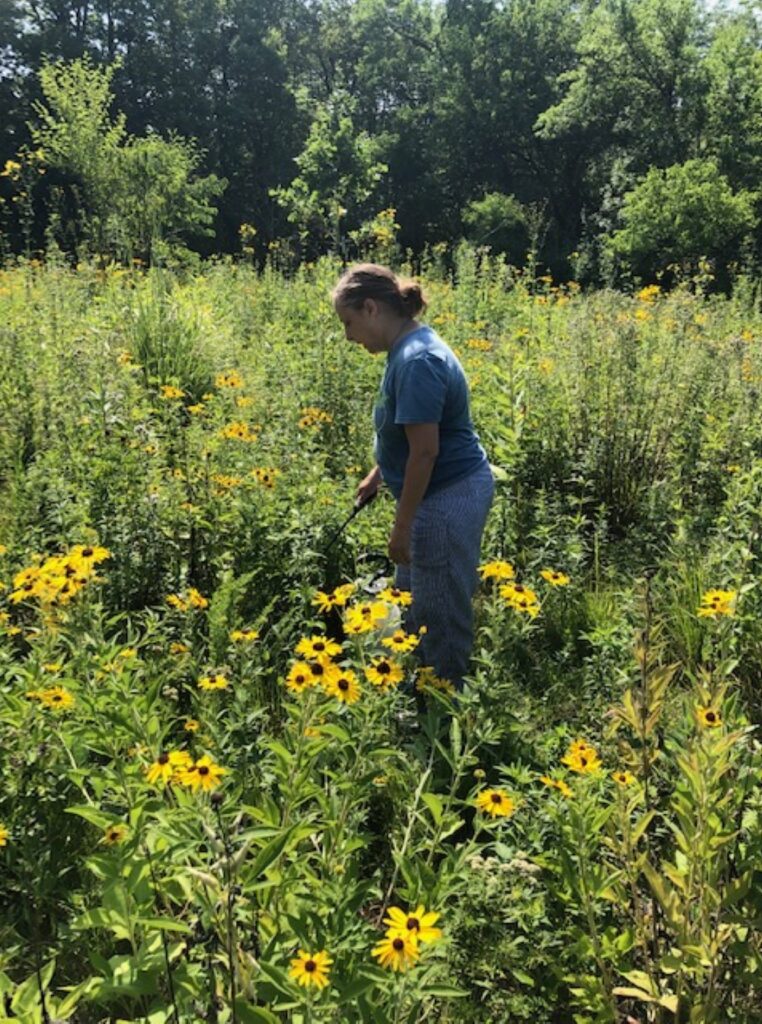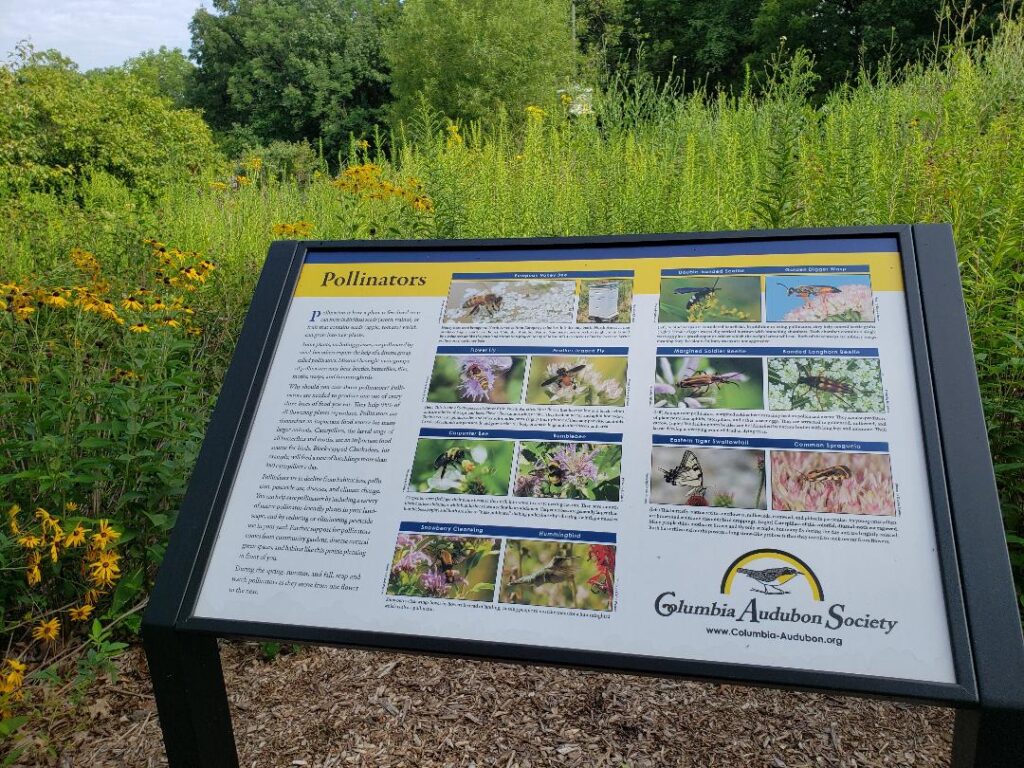Summer at the Nature Areas
by Bill Mees, Nature Areas Committee
Summer means school is out, and there’s no homework. But for Columbia Audubon’s nature areas, summer is the growing season, the time when the work really begins at Columbia Audubon Nature Sanctuary and Wild Haven Nature Area..
Columbia Audubon Nature Sanctuary
The deer exclosures erected in the late spring are already demonstrating the damage associated with too many deer. See in the photo how there are wild flowers inside the exclosure and almost none outside (eaten by the deer.)
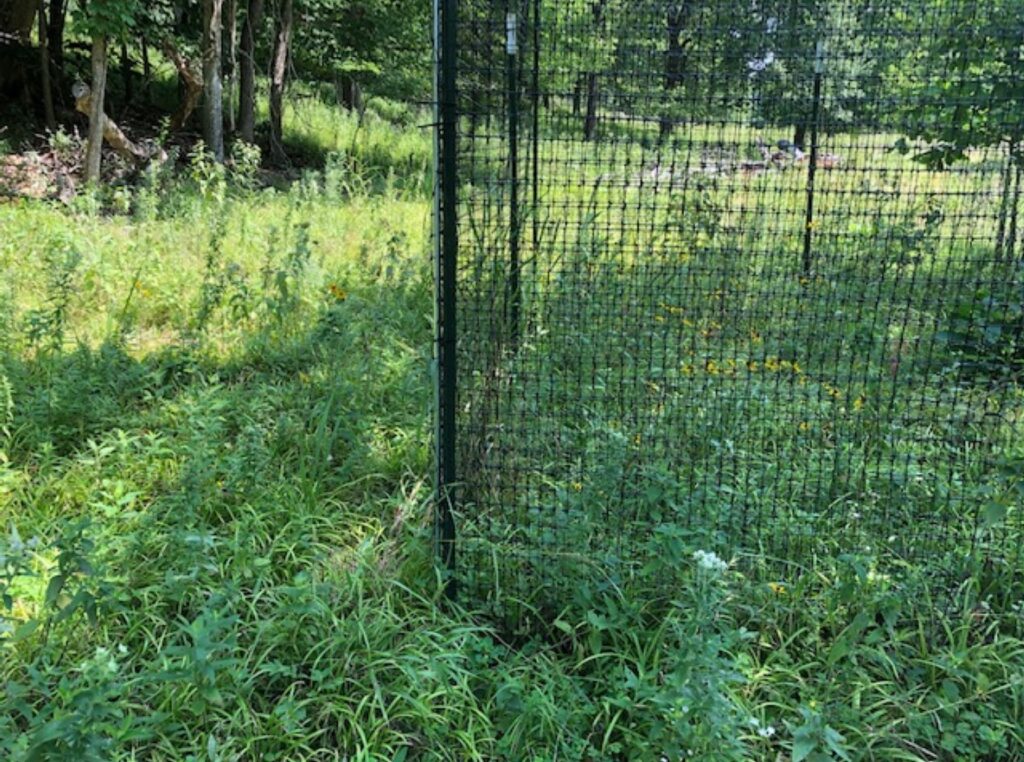
Brown eyed Susan blooming inside the deer exclosure with all outside the exclosure having been browsed by deer.
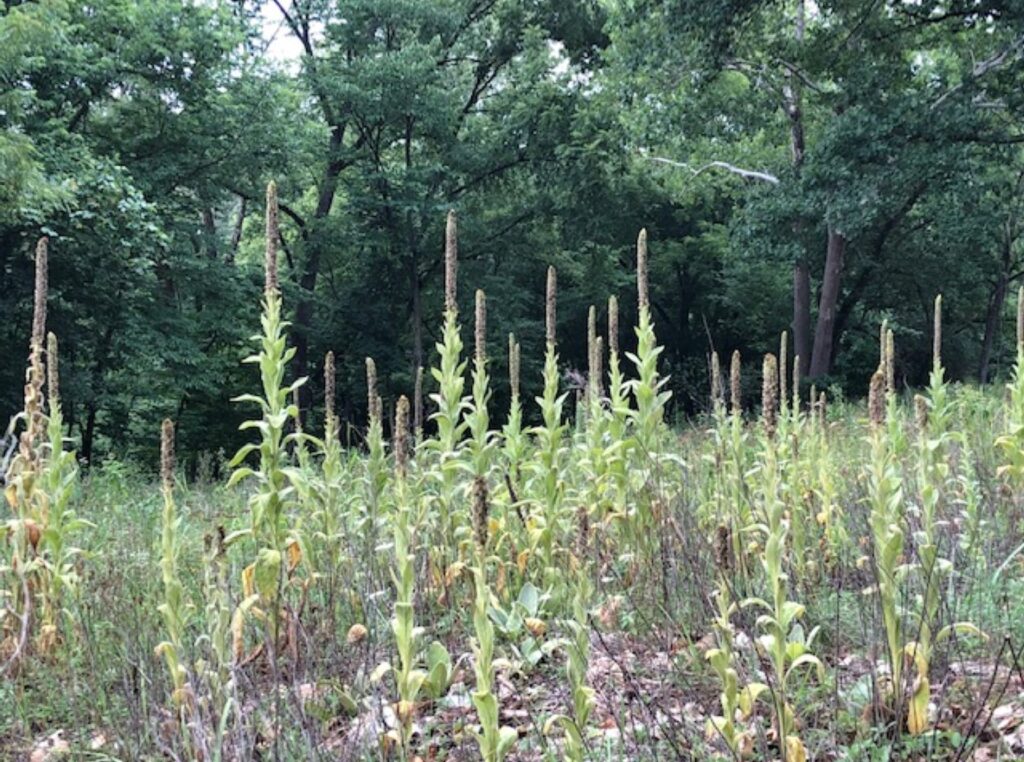
Mullein flowering stalks about to flower and seed; all visible mullein stalks were removed this summer.
An ever-present scourge is Sericea, another invasive species. Efforts to eliminate this plant continue. Audubon has worked for several years eradicating sericea in the CANS prairie as well as the portion of prairie that extends into Bonnie View Nature Sanctuary. Sericea has no respect for property boundaries.
Recently, Paul McKenzie identified another invasive plant species, Japanese stiltgrass. This plant was located along Scott’s Branch Creek. The infestation is quite extensive and Audubon members are investigating potential eradication solutions and will be working with the city to find a solution as the entire Scott’s Branch contains several populations.
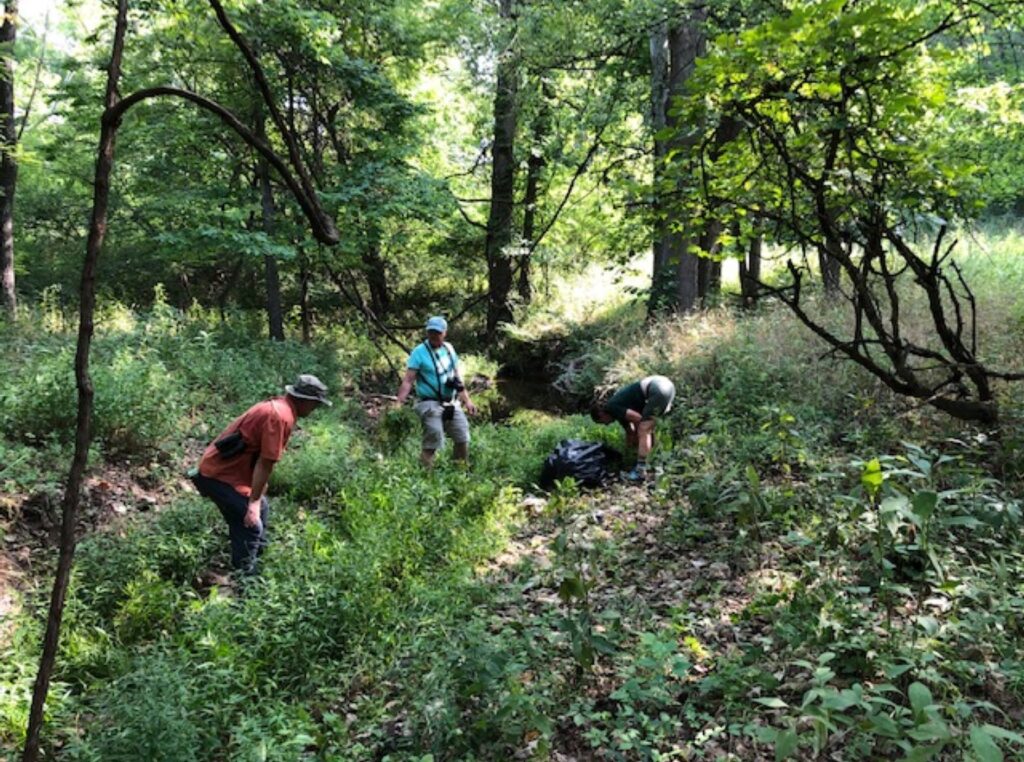
Bill Mees, John Besser, Paul McKenzie, and Allison Vaughn paid a visit to Scott’s Branch to meaure the extent of the infestation of stiltgrass. While there, we pulled one bag full.
The new trail side Pollinator panel is receiving a good response from visitors. Located along Scott’s Branch Trail, it is sure to attract the interest of many people walking the trail. All of the photos and text were provided by members of Columbia Audubon Society.
The 2023 Band With Nature field trip event for 2nd graders is scheduled for Oct. 30 (Monday), November 1st and 2nd (Wednesday-Thursday). We are seeking volunteers to assist in this popular annual event. Please contact Bill Mees at jandbmees at mchsi.com if interested.
Wild Haven:
Preparations for the prairie planting at Wild Haven are nearly complete. A mixture of seed to include native grasses, wildflowers, and forbs will be purchased this fall. We will broadcast the seed across the prepared ground this coming winter. Seeding is the final step in this two-year establishment process.
David Neely is leading the effort to control autumn olive and bush honeysuckle. He is also eliminating the woody species growing into a small prairie clearing next to the “white/yellow” trails. These maintenance efforts are ongoing.
Wild Haven is also the beneficiary of Joanna Reuter’s cartography skills. The new and much improved Wild Haven map identifies each of the trails their length and the location of trail-side benches. The new maps encourage visitors to explore beyond the shelter area and enjoy this biologically diverse property. At the CAS picnic on Sept. 17, we’ll lead hikes so you can see this splendid nature area for yourself!
As always, the summer growing season and the occasional wind storm keeps David Neely and Bill Mees busy clearing and manicuring trails. Experience proves limbs and trees prefer to fall across trails.
Audubon members and the public are encouraged to visit these properties. Whether birdwatching or simply bathing in nature you will be glad you came.

